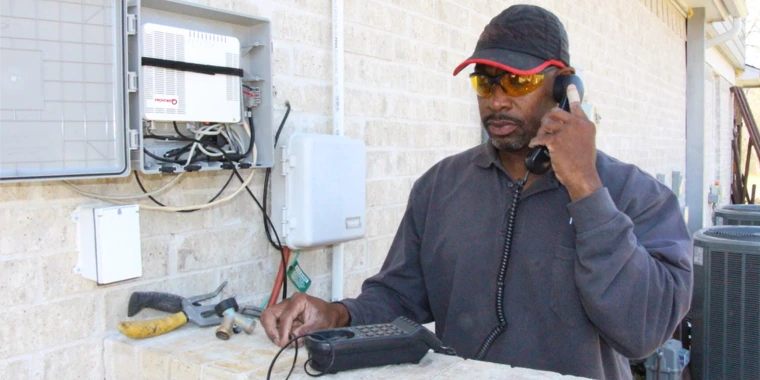How to troubleshoot if you can’t receive calls but can make them
If you’re experiencing an issue with your phone service and can make phone calls but can’t receive them, we can help. Follow the steps below to troubleshoot your issue.
Troubleshooting first steps
Start with checking the basics like issues with your phones or phone number.
- Check your phone’s ringer: If you have one phone connected, make sure the ringer is turned on and the volume is up.
- Test with a corded phone: It’s best to troubleshoot with a corded phone to rule out any cordless phone issues.
- Check if there’s an issue with a specific area code: You might be having trouble with calls from a single area. If you recently transferred your phone number from another company, the process may be incomplete. Chat with us for support.
Troubleshooting calling features
Some calling features may interfere with, or block, incoming calls. Next, check to see if you have any of these features enabled. If you do, turn them off and see if you can receive calls.
- Do not disturb: You won’t receive any calls when this feature is active. Dial *79 to disable this feature.
- Call forwarding: If this feature is on, your calls are being forwarded to another number. Dial *73 to disable this feature.
- Incoming call block/anonymous call rejection: When this feature is active, you won’t receive any calls from callers who block their calling information. Dial *87 to disable this feature.
- Digital Voice features: Incoming calls can be impacted by several different features available with your Digital Voice service. Sign into your account and view your services, then choose Open Settings under your voice plan to access your voice features.
Still having issues? Next, identify which phone connection you have, then try the additional troubleshooting steps for your specific connection.
How to identify your phone connection
If you’re unsure which phone connection you have, here’s a quick way to identify it.
Fiber phone service: Your phone connection uses an Optical Network Terminal (ONT) installed outside your home, or in a garage or basement.
Standard phone service: Your phone connection uses a Network Interface Device (NID) installed outside your home, or in a garage or basement.
Internet phone service: Your phone connection uses phone ports on your internet router inside your home.

How to test your home phone connection
Learn how to perform a simple test to diagnose the problem with your home phone.
If you’re unable to make a call from your ONT or NID, there may be an issue with them. Chat with us for more support.
Troubleshooting internet phone service
If you have internet phone service through your router, you can test your phone at your router’s phone ports.
If you’re unable to make a call from your router, there may be an issue with it. Chat with us for more support.